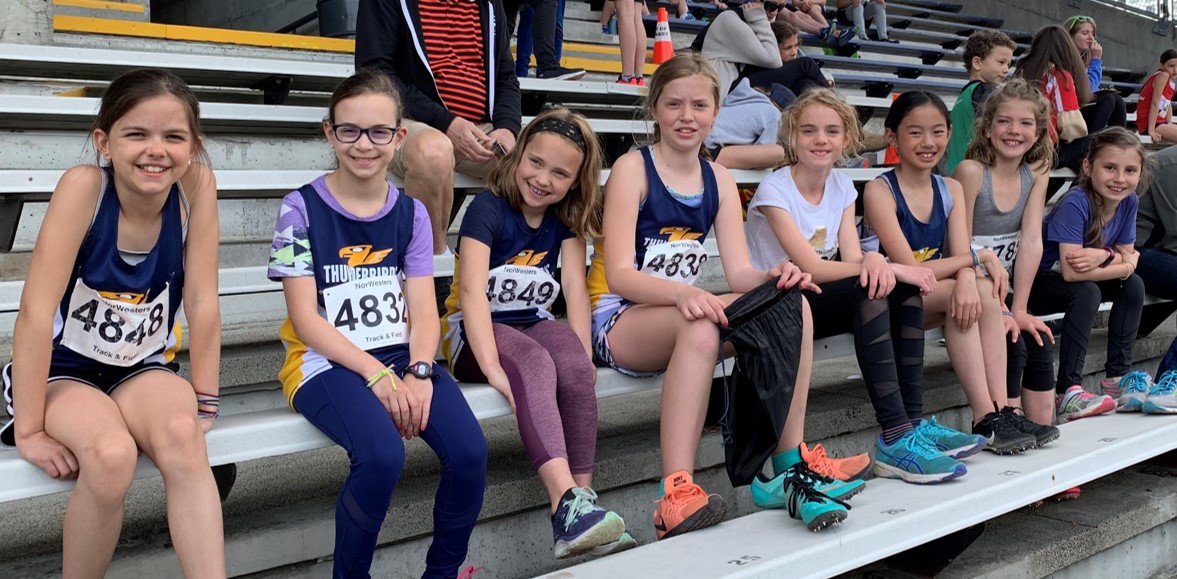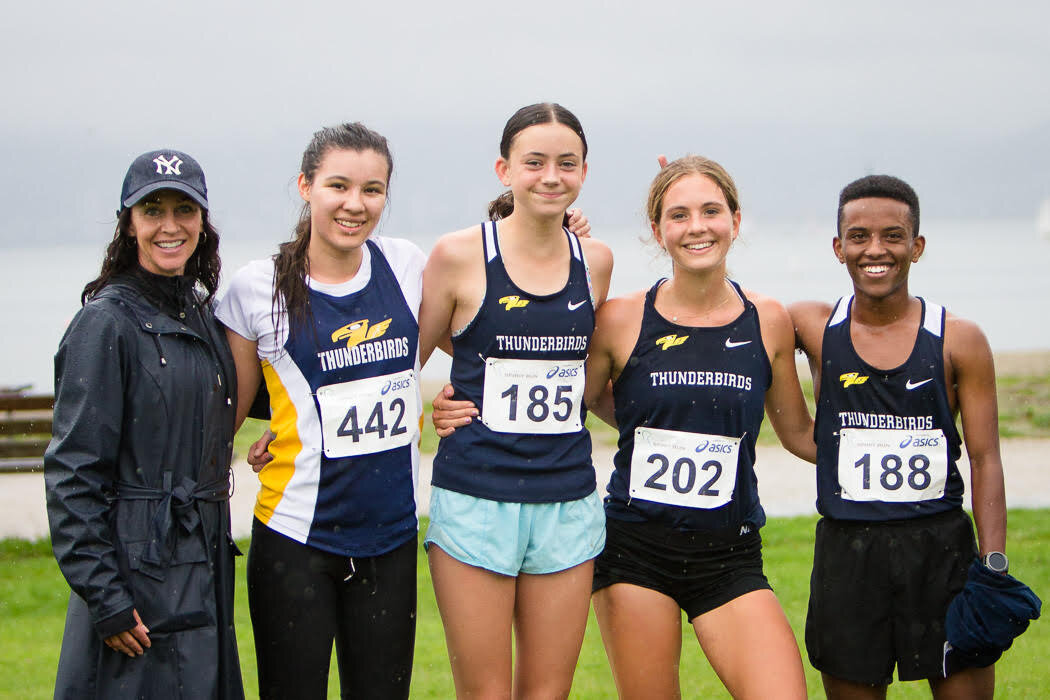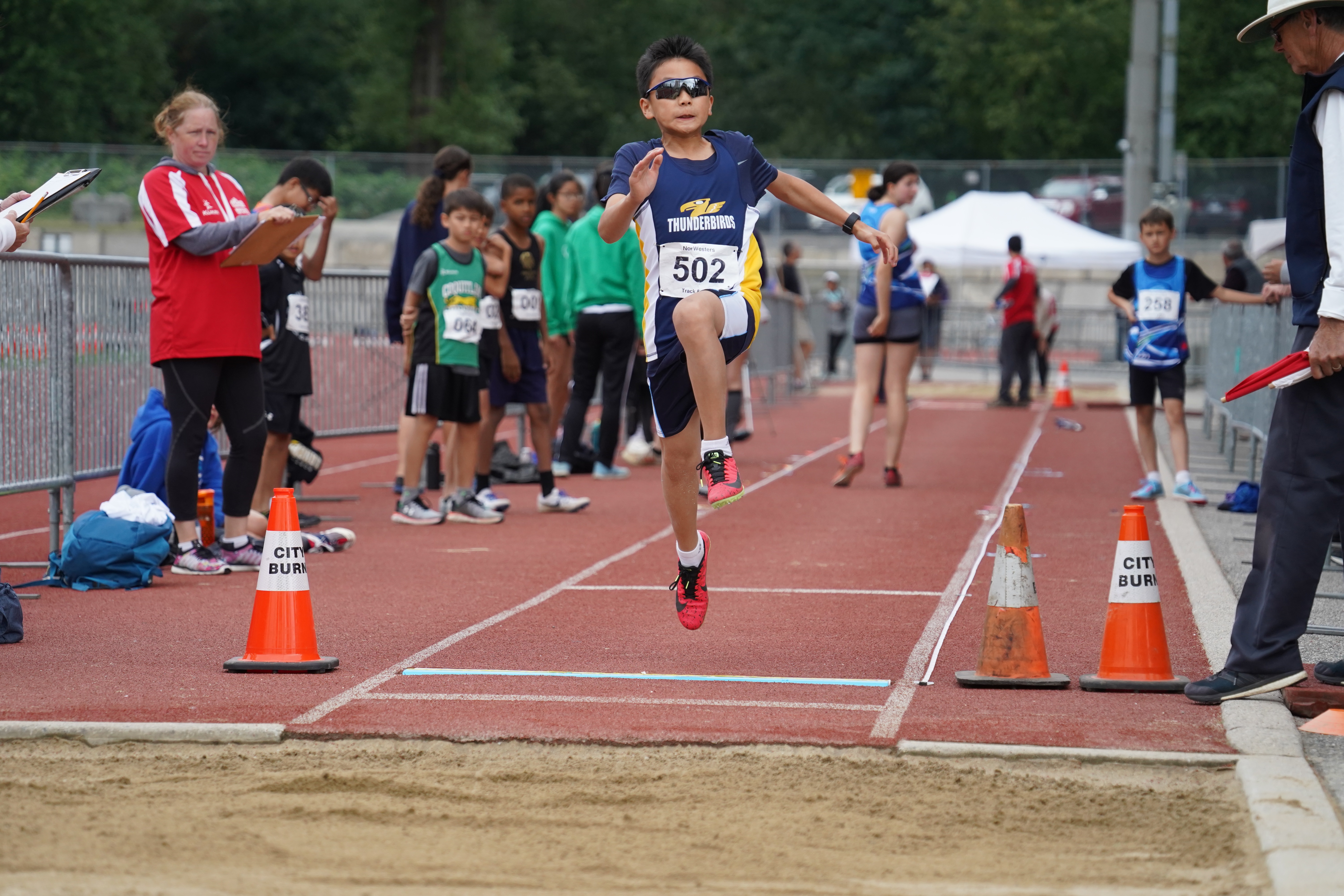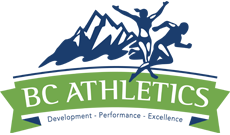Straining & Striving Together: A Club Based Mentorship Program
Last July, BC Athletics wrote an article about Why Girls Leave Sport & What We Can Do About It, sharing the opportunity to apply to participate in the viaSport She Plays Female Retention Project. One BC Athletics club that successfully applied to participate in the program was the Vancouver Thunderbirds. Coming out of the projects’ training, the Thunderbirds developed a 12 week mentorship program, which included high school athletes serving as mentors to younger club athletes, bi-weekly webinars on topics such as “Victory is Fleeting” and “Opportunity For Growth”, and high performance athletes sharing their stories. This month, I got to chat with the Thunderbirds CEO Nigel Hole to learn more about this program.
This is such a great initiative! Where did the idea for this come from?
It all came out of the She Plays Female Retention Project. We successfully applied for the grant and went through the designing process in the fall, looking at some of the different issues we’re facing and what could be possible solutions. I’d recognized that our turnover in the club was way higher than I would have expected. Looking pre-pandemic, we turned over 55% of our members, meaning more than half of them weren’t coming back. You obviously expect some natural attrition but with all ages, all training groups, all locations, it was pretty high across the board. Also, last spring when we couldn’t practice as a group, we started up a Fireside Chat series of seminars with high performance guest speakers to keep everybody looped in. We found that we kept getting the same 20 people attending all of them which is great but at the same time, we’re just preaching to the choir. These are the athletes who are super keen, and super engaged no matter what. So I knew we couldn’t just preach to the choir, because we’re losing everybody else.
Some of the things that we came up with were trying to do more social events, looking at ways to build friendships between people outside of practice, fostering a sense of belonging which include a mentorship program or some type of athlete recognition, trying to foster sport for life, building leadership, those type of things. Ultimately the preferred thing to focus on was this type of mentorship program as a way to empower athletes and give them leadership opportunities too.

Mentorship can mean so many things. How did you start to determine what you wanted the Thunderbirds mentorship program to look like?
I spent a few weeks looking at what other community programs had done in terms of mentorship. One of the people I reached out to was Emma Gibbons (currently CEO of Volleyball BC, formerly with West Vancouver Field Hockey Club). A few years ago their club did a seminar series, with 4 parts once a week for a month. It was obviously in person back then and they had different speakers come in to discuss a couple different topics. I’d also read so much about how role models were so important for younger athletes, giving them someone positive to look up to who’s in sports so that they’ll hopefully stick around.
Afterwards I looked at my research and thought, “What can I take from all these? What will work in COVID? What are the key elements?” I wanted us to figure out what type of outcomes we want these athletes walking away with, and reverse engineer from there. We wanted to make sure we weren’t repeating something that already existed, especially right now, when there’s already a bunch of webinars on. We also wanted to make sure that whatever we did was equally relevant for the highest & lowest performing athletes. A lot of the webinars that exist are very performance minded but that’s maybe not as applicable to the Grade 6 girl who’s going to quit sport.
COVID actually gave me the space to step back and evaluate things. With my organization Athlete-Tutor one of the topics I kept getting asked to address was performance-anxiety, with athletes getting super nervous before competitions, which not only impacts performances but also an athletes willingness to stay involved in sport, particularly if you’re not performing well. I can help treat the symptoms of anxiety but I kept thinking, “What’s upstream of this? Where is it coming from?” Also during the pandemic you can see people struggling with motivation because they don’t have any competitions coming up, so there’s also the question of how can we create more unshakeable motivation. Those thoughts led me to this concept of performance based identity, where your self-worth is contingent upon your performances.
A lot of athletes fall into this trap of only seeing themselves as an athlete which is why a lot of athletes struggle with retirement, injuries, and performance slumps. Suddenly there’s the question of who are you and what is your value to the external world. I felt that this was a topic I wasn’t hearing people talk about and if younger athletes could hear it, particularly before they get too far down this path, that we can start to help them build their self-worth around other things beyond performance, that can insulate them from bumps in the road later and help them find motivation outside of competitions, and it would prevent a lot of anxiety later in sport.
What were some of the outcomes you wanted athletes to come away with at the end of this program?
The title of this series was The Purpose of Sport: Straining & Striving Together and the vision was that every member of our club feels empowered to play an important role in the collective and individual growth of their teammates. The main alternative to a performance-based identity is a purpose-based identity. With performance-based you think, “I matter because I can accomplish this” while purpose-based is more transcendent; it’s about connecting and contributing to something bigger than yourself. That’s what I wanted to steer people towards. I want them coming out of this where they don’t just see sport as a means of achieving performances, but as an opportunity to be part of a team which isn’t always an intuitive mindset in an individual sport like track & field.
So with this being a mentorship program, how did you go about selecting mentor athletes?
 In terms of the application process it was fairly open, very “Anyone who is interested, go for it”. However, when I checked a day before the deadline only 3 people had applied. At the point I reached out to the coaches asking “Who should we be tapping on the shoulder to apply for this? Who do you see as having leadership potential and taking this seriously?” But we did also want to keep it open because we wanted people to surprise us and give people the opportunity to step up.
In terms of the application process it was fairly open, very “Anyone who is interested, go for it”. However, when I checked a day before the deadline only 3 people had applied. At the point I reached out to the coaches asking “Who should we be tapping on the shoulder to apply for this? Who do you see as having leadership potential and taking this seriously?” But we did also want to keep it open because we wanted people to surprise us and give people the opportunity to step up.
Despite the need for encouragement, the mentorship piece actually ended up being a huge hook to get the high school athletes involved. I’m not sure if we would have gotten them otherwise because I think it’s super hard to make something that’s super enticing for Grade 6’s all the way up to Grade 12’s. We did have to figure out where to draw the line in the sand between mentor and mentee and ended up with Grades 6-9 being the mentees, and Grade 10’s – 12’s being the mentors. The thought with the Grade 10-12s was that they’re older and more experienced. Interestingly we realized afterwards that we got zero Grade 9 applicants to be mentees. I did reach out to them but they were more interested in being mentors than mentees, which speaks to them not wanting to be grouped with the younger athletes. At that point, we actually had too many mentors so the numbers wouldn’t have allowed for it.
This program is going very well but would you have done this type of mentorship program if in-person gatherings could have occurred?
Now having seen it go as well as it has I probably wouldn’t actually change much, but had you put me in 2019 I wouldn’t have done this online, because no one was as comfortable with online learning. Even this year there was a huge concern from parents saying, “My kids are Zoom-ed out, they don’t want to do anything else on Zoom”. We recognize this and have tried to build in elements to keep athletes engaged. We’ll send them into breakout rooms a couple times, use the polls, get them to raise their hands. We’ve had to adapt it to keep them engaged but it’s all been positive. If we weren’t forced to with the pandemic, we probably wouldn’t have gotten as far as we had.
Also, initially this was supposed to be just for females but because it was online we were able to add males as there was no extra cost to including them, and the topics were inclusive of everyone and not gender specific. In total we had 25 female pairings and 5 male pairings. Those numbers make sense since we had more females go through the design process and it had been advertised for them the whole way through.
What would your advice be to other clubs who were interested in doing something similar?

In terms of our guest speakers, I tried to keep all our high performance guest speakers within house. I wanted our younger athletes to see they have accessible role models, someone they can see around the track, not someone they weren’t going to see again. However, you can certainly just reach out to your community and bring in other people. I will say that since I’m trying to move away from a performance-based mindset, I don’t publicize who the guest speaker is going to be and I go out of my way not to mention their athletic accomplishments as part of their introduction, otherwise it continues to reinforce the idea that you’re only valued if you perform well. Even so I’ve found that younger athletes are super receptive to hearing from current athletes more so than those who are retired.
With this series I’ve had a very clear idea of what I’m trying to achieve and where I’m trying to steer them. Know where you’re wanting to go, and bring in the speakers accordingly. Pick a topic that the person who is going to lead it is comfortable with and that’s important to them. People remember through stories, so it’s great the more you can pull out what you want to teach from the story and have that do the teaching as opposed to having a lecture.
Thank you Nigel!
Author: Sabrina Nettey - Introductory Programs Coordinator – RunJumpThrowWheel & Junior Development, BC Athletics







